Article by TL Andrews // Aug. 21, 2018
Sarah Cameron Sunde has spent much of her career keeping her physical body out of her work. After all, her artistic mother tongue is theater directing. As such, she has spent 19 years working as a theater producer and director. Yet she can increasingly be found at the center of scrutiny—partially because another aspect of her work, which she only reluctantly and perhaps begrudgingly calls “performance art,” exacts such a high physical toll that she couldn’t imagine asking anyone else do it.
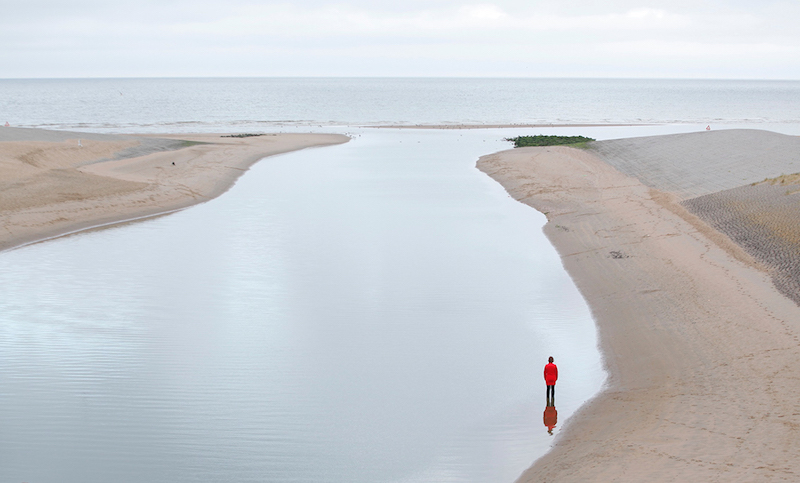
Sarah Cameron Sunde: 36.5 / A Durational Performance with the Sea, North Sea, Netherlands // Photo by Sarah Cameron Sunde and Jonas de Witte
One such piece, 36.5 / A Durational Performance with the Sea (2013–present), calls for her to spend upwards of 12 consecutive hours in an icy ocean or sea as the tide clasps and releases her body. Sunde aims to make the experience participatory on many levels: onlookers, for example, are welcome to stand in the water with her. The events—which have taken place in countries such as the United States, Netherlands and Bangladesh—are also captured on film and shown in real time at exhibition spaces around the world. These performances eventually also led to the creation of Works on Water, a triennial dedicated to art made on, in and with water, which Sunde oversees alongside a curatorial team comprised of Katie Pearl, Nancy Nowacek, Eve Mosher, Clarinda Mac Low and Emily Blumenfeld. Sunde spoke to Berlin Art Link about her multidisciplinary work and how it can affect our relationship with nature, and water more specifically.
TL Andrews: Can you tell us about the background to 36.5? How did it come about?
Sarah Cameron Sunde: The seeds of the project were planted in 2012 when Hurricane Sandy hit New York City. My work has always had to do with time and I look at it from different perspectives, but that moment when Sandy happened, I was really struck by the temporality of place. All of a sudden I understood in my gut that New York could disappear in my lifetime, or that we might have to abandon the city due to environmental change, specifically extreme weather and sea level rise. At the time, I’d been working on a project about the struggle of an artist to survive in the city, so I had the image of a little artist running around New York city with all the water slowly rising in my mind. Then when I was in Maine in August 2013, I was so blown away by the tidal shift, I saw that the tide could be a metaphor for environmental change.
TA: How did you notice the tidal shift?
SCS: One day I sat outside and watched the tide as it engulfed a boulder over the course of about half an hour and I just had this image of a person standing there. I was like, “Okay, who can I convince to stand in the water for full tidal cycle so that I can capture this image?” I very quickly realized that I could not convince anyone else to do it, so I did it. I stood in the water for 12 hours and 48 minutes. It was the hardest thing I’ve ever done but I felt so alive and I remember thinking, “This is a series.” I felt very connected to the water around the world and started thinking about how the tide is like the earth breathing with the moon, and that one molecule of water in Maine could someday reach the southern tip of Africa.
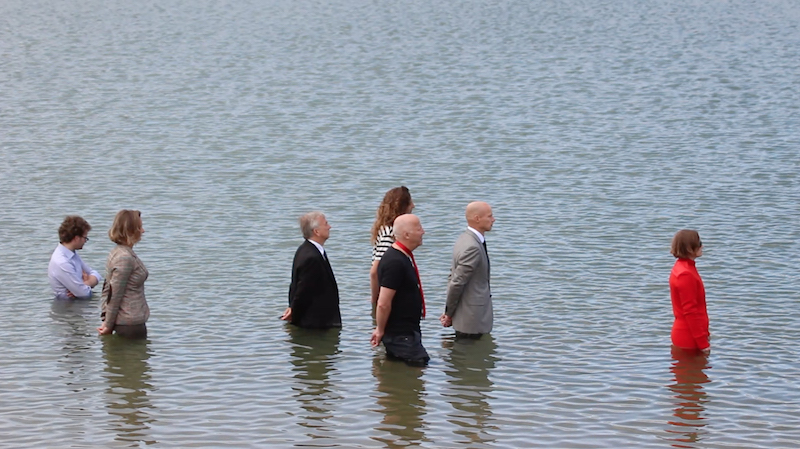
Sarah Cameron Sunde: 36.5 / A Durational Performance with the Sea, North Sea, Netherlands // Photo by Sarah Cameron Sunde and Jonas de Witte
TA: Tell us about the experience of having nature, in this case the tides, be part of your “canvas,” so to speak. What would you say is the significance of that choice?
SCS: I always tell people that I’m purposefully trying to have this sensory experience and really take it in, feel the water and communicate with the water in a way that I don’t otherwise do in my life. The thing is, physically it is challenging. So I’m fluctuating between trying to have a sensory experience—working through my senses: What do I see, what do I feel, what do I hear, what do I taste, what do I smell?—and letting go and just being with the water. So I’m thinking about everything and I’m thinking about nothing, I’m feeling everything and I’m feeling nothing. I’m never bored. I go into another place. That’s why the subtitle, A durational performance with the Sea, is really important to me: there’s a possibility of collaborating with the water.
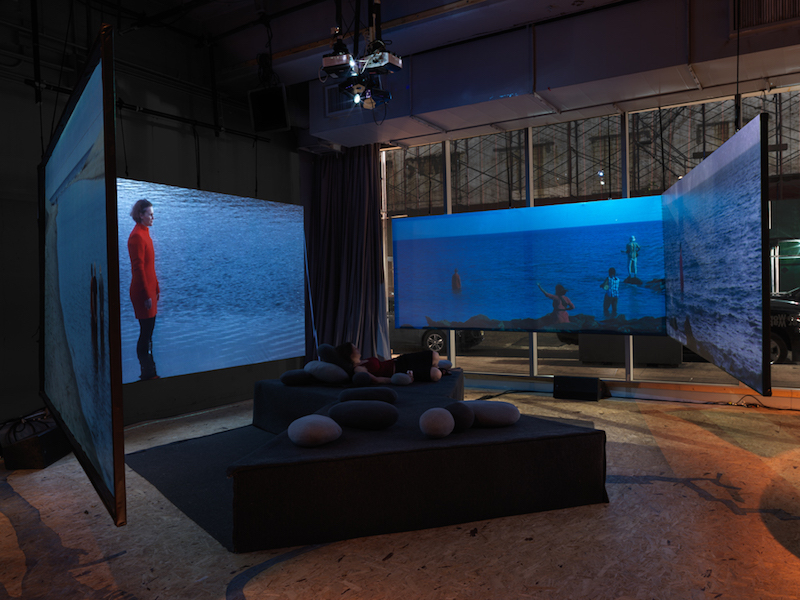
Sarah Cameron Sunde: 36.5 / A Durational Performance with the Sea, video installation // Courtesy of the artist
TA: Your work often has time as a central feature. What would you say is the power of challenging or altering the public’s sense of time when they are engaging with your work?
SCS: I’m not a linear kind of person. I guess I have some concept of time and I understand that it’s a tool, but I don’t really believe in the construct of minutes being equal, instead I believe that time expands and contracts. I think a lot about presence and what it means to be in the present moment. I’m thinking in deep time and theological time and what that would be in the future—acknowledging that we, as humans, are just a blip in the history of the universe. I’m always thinking about the micro and the macro; zooming in and zooming out are always a part of my work. And, because my initial training is in making performances, all of my work is time-based in some way. Time always functions for me in terms of content and form. I’m always thinking about a moment, the potential of a moment, and how a moment can change everything if you allow it to.
TA: Much of your work is global in the sense that it involves many locations and communities. How have interactions with communities informed your work-both in general and specifically while creating 36.5?
SCS: After I started 36.5, I actually ended up going back to graduate school and getting a degree in digital and interdisciplinary art practice. So it’s informed everything that I do. All of my work has to do with the awareness of the environment, this awareness of the human and the non-human, and the individual versus the collective. It’s me as the solitary person but then I invite people to join and I can only do it when I have support from a lot of people.
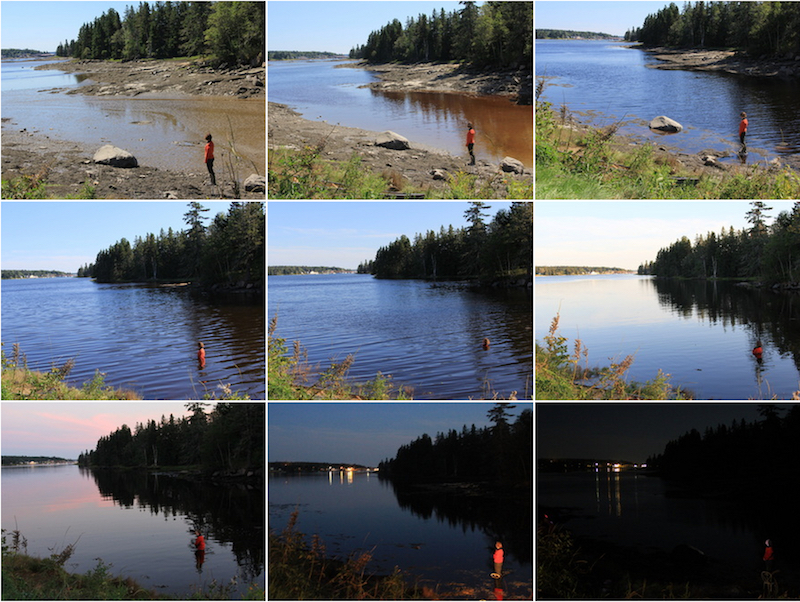
Sarah Cameron Sunde: 36.5 / A Durational Performance with the Sea, Bass Harbor, Maine // Photos by Sarah Cameron Sunde and Maridee Slater
TA: Climate change has altered our relationship with water. On the one hand it is life, but on the other hand rising sea levels are a harbinger of peril. How does 36.5 invite us to engage with this new kind of relationship?
SCS: What I’m trying to do is create a space where people can sit and watch, they can come and go. But it’s over a long period of time and I’m hoping the work will slow them down enough so that they contemplate things. We live in this moment where everything is moving fast, everything is very comfortable and we take a lot of things for granted, myself included. I think stopping and just paying attention to the water, giving it real space to talk to us and having that awareness is really key for us, as we try to figure out how to adapt to what our future will be.
This article is part of our monthly topic of ‘Water.’ To read more from this topic, click here.
Artist Info
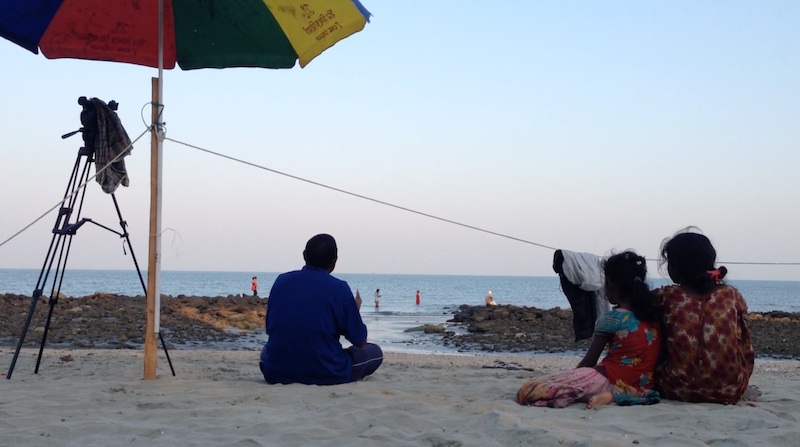
Sarah Cameron Sunde: 36.5 / A Durational Performance with the Sea, Bay of Bengal, Bangladesh // Photo by Sarah Cameron Sunde and Saiful Wadud Helal
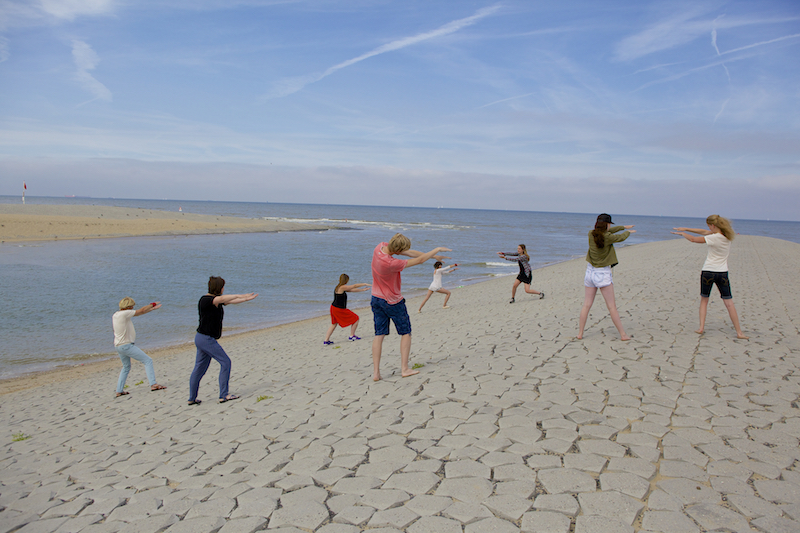
Sarah Cameron Sunde: 36.5 / A Durational Performance with the Sea, North Sea, Netherlands // Photo by Sarah Cameron Sunde and Jonas de Witte


















